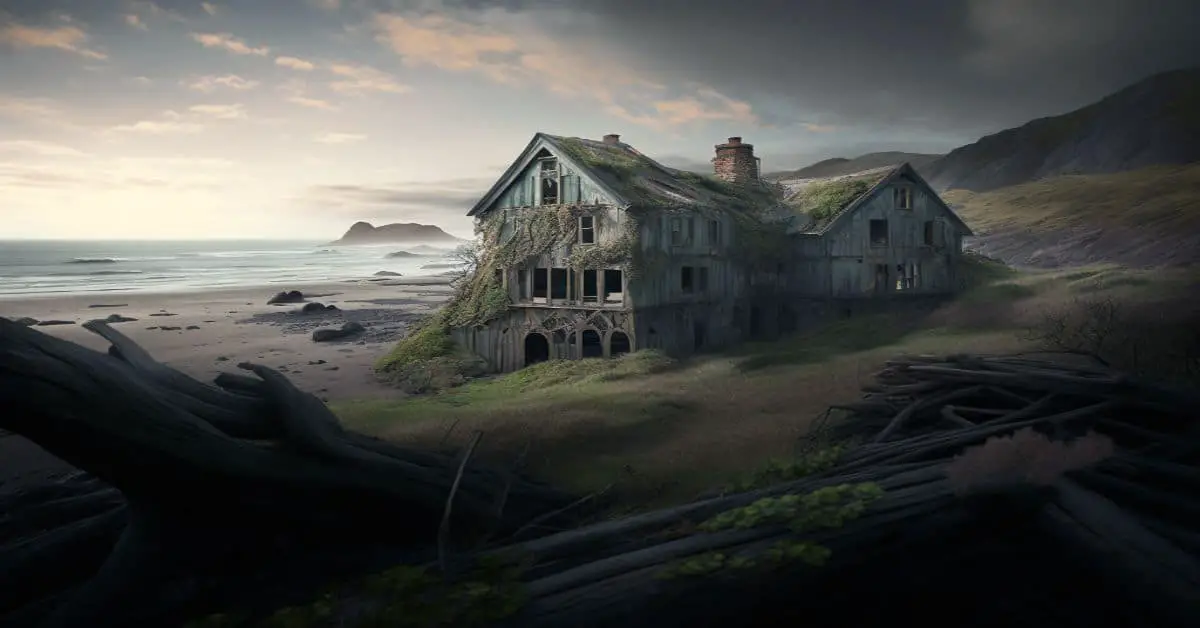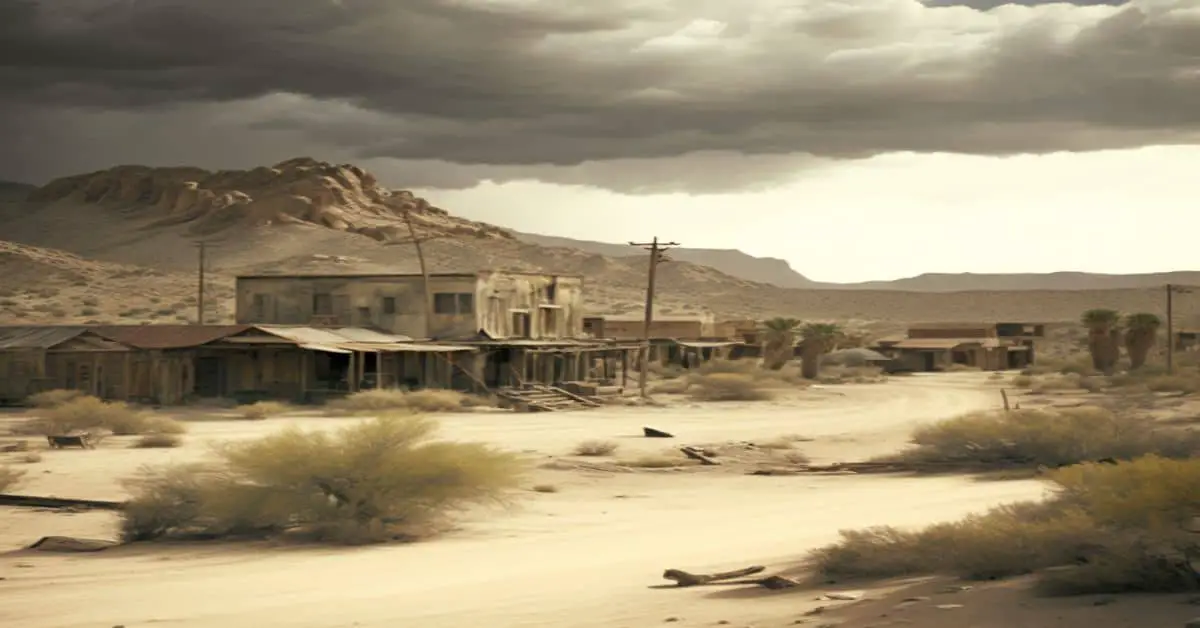Laupahoehoe, a once-thriving community on the east coast of Hawaii’s Big Island, now stands as a haunting reminder of the destructive power of nature. Like a scar on the land, the remnants of its buildings and monuments serve as a testament to the lives lost and the tragedy that struck this small town.
The devastating tsunami of 1946 forever changed the course of Laupahoehoe’s history and left a profound impact on the community that can still be felt today. This article explores the history of Laupahoehoe and the devastating impact of the tsunami that wiped out much of its population.
Through an objective lens, we will examine the town’s past as a bustling hub for fishermen, taro farmers, and sugar companies. We will also analyze the impact of the tsunami on the town’s harbor and infrastructure, as well as the personal toll it took on the lives of its inhabitants.
By delving into this tragic event, we hope to honor the memory of those who were lost and to shed light on the importance of disaster preparedness.
Key Takeaways
- Laupahoehoe was a small ghost town with few inhabitants, but it had a thriving little community from the 1800s, made up of fishermen and taro farmers, with a hotel, a Chinese restaurant, a church, and many homes.
- Laupahoehoe Harbor was a normal nautical landing that allowed smaller boats to ferry shipments from land to big ships anchored off shore, and it had a busy harbor with 2-3 thousand inhabitants until the established railroad system reduced its use.
- Laupahoehoe is infamous for the 1946 tsunami that killed many residents, including 23 students and four teachers, and most nearby residents, including the school, were moved to the top of the ridge. A monument with the names and ages of the children and teachers has been erected on the school site, and only two children and one teacher survived the tsunami.
- Laupahoehoe was named after the terraced taro fields that covered the area up to the cliff, and it had some foundations and a monument on the school site as a reminder of the devastating tsunami.
Overview of Laupahoehoe
The small ghost town of Laupahoehoe was once a thriving community of fishermen and taro farmers. It had a busy harbor and established railroad system, making it a trade and transportation hub. The town also had a post office, initially located at Abel Harris plantation and later at William Lydgate’s office, which served the local community.
Taro farming was a significant source of livelihood for the residents of Laupahoehoe. The area up to the cliff was terraced with taro fields, and the farmers worked hard to cultivate and harvest this staple crop.
However, the town’s prosperity was short-lived. In 1946, Laupahoehoe was devastated by a deadly tsunami that killed many residents, including 23 students and four teachers. The tragedy left the town in ruins, and it could never fully recover.
Community and Harbor
Fishing and taro farming were the primary occupations of the inhabitants of this small community, which also had a harbor that served as a normal nautical landing for smaller boats to ferry shipments from land to larger ships anchored off shore.
The Laupahoehoe Harbor was an essential hub for the transportation of goods and people, making it a significant contributor to the region’s economic growth.
The harbor’s strategic location made it a popular choice for smaller ships and boats, and its use was essential for the survival of the community’s inhabitants.
The fishing traditions of Laupahoehoe were deeply ingrained in the community’s culture.
The region’s abundant fish population provided a reliable food source for the inhabitants, and fishing became a way of life for many.
Taro farming was also a crucial source of income for the community, and the harvested crops were used in various dishes and as a staple food for many households.
The Laupahoehoe Harbor and its economic impact on the region played a significant role in the community’s development, making it an essential part of the town’s history.
Tsunami Tragedy
One of the deadliest natural disasters in Hawaii’s history struck Laupahoehoe on April 1st, 1946, resulting in the loss of many lives, including 23 students and four teachers. The three towering tidal waves that hit the town devastated the community, leaving only two children and one teacher as survivors. The tragedy left a profound impact on the town, with a monument erected on the school site that lists the names and ages of the children and teachers who lost their lives.
Reconstruction efforts were launched in the aftermath of the tsunami to help the town recover. Most nearby residents, including the school, were moved to the top of the ridge, and the foundations and a monument were constructed on the school site. Survivor stories emerged, including the teacher who married the doctor who was in the rescue boat within a year of the disaster.
Despite the devastating loss of life, the resilience and determination of the Laupahoehoe community helped them rebuild and recover from this tragedy.
Frequently Asked Questions
What caused the Laupahoehoe Sugar Company to shut down?
The Laupahoehoe Sugar Company was impacted by establishing a railroad system, which reduced the need for Laupahoehoe Harbor. This, along with other reasons, led to the closure of the company, causing a negative impact on the local economy.
What was the ethnicity of the majority of the community members in Laupahoehoe?
Most of the community members in Laupahoehoe were fishermen and taro farmers, with a mix of ethnic diversity and cultural traditions. The town had a thriving little community from the 1800s, with a hotel, Chinese restaurant, church, and many homes.
What was the name of the surviving teacher of the 1946 tsunami and what happened to her after the tragedy?
The surviving teacher of the 1946 Laupahoehoe tsunami was Mrs. Okawa. She married the doctor who rescued her and went on to teach for many years, leaving a legacy of resilience and strength that impacted future generations.
Are there any local legends or stories associated with the name ‘Leaf of Lava’?
Local folklore surrounding the name “Leaf of Lava”in Laupahoehoe holds cultural significance in Hawaiian mythology. The historical context of natural disasters like the 1946 tsunami highlights the community’s resilience, while preservation efforts aim to honor the town’s legacy.
Has there been any recent efforts to restore or revitalize the ghost town of Laupahoehoe?
Efforts to restore or revitalize Laupahoehoe have been limited in recent years. There has been no significant progression in revitalizing this small ghost town, which was devastated by a deadly tsunami in 1946.

